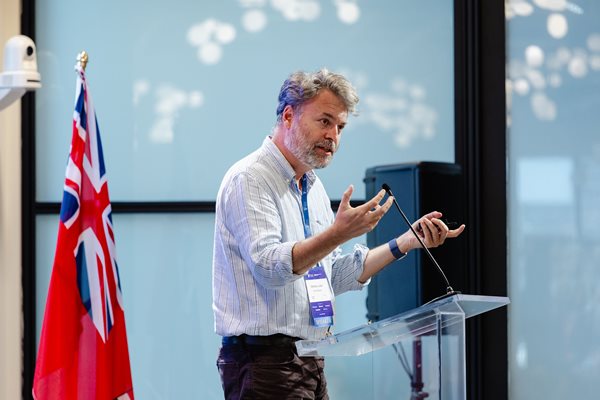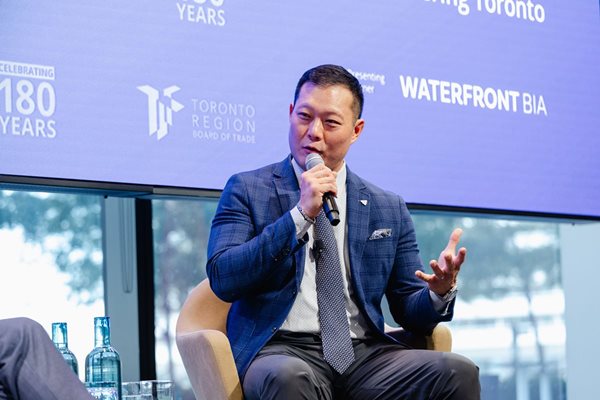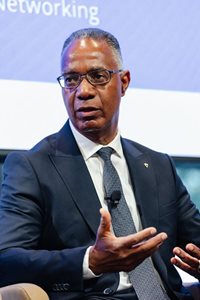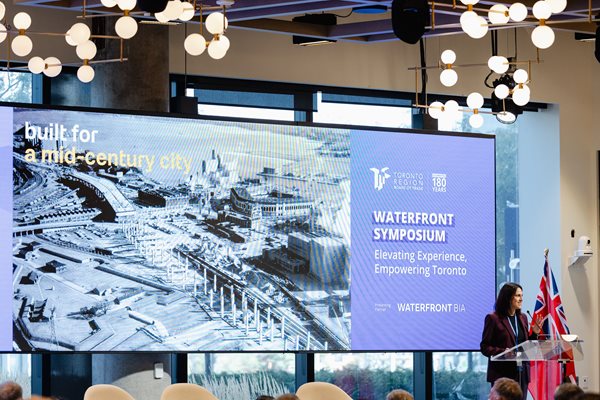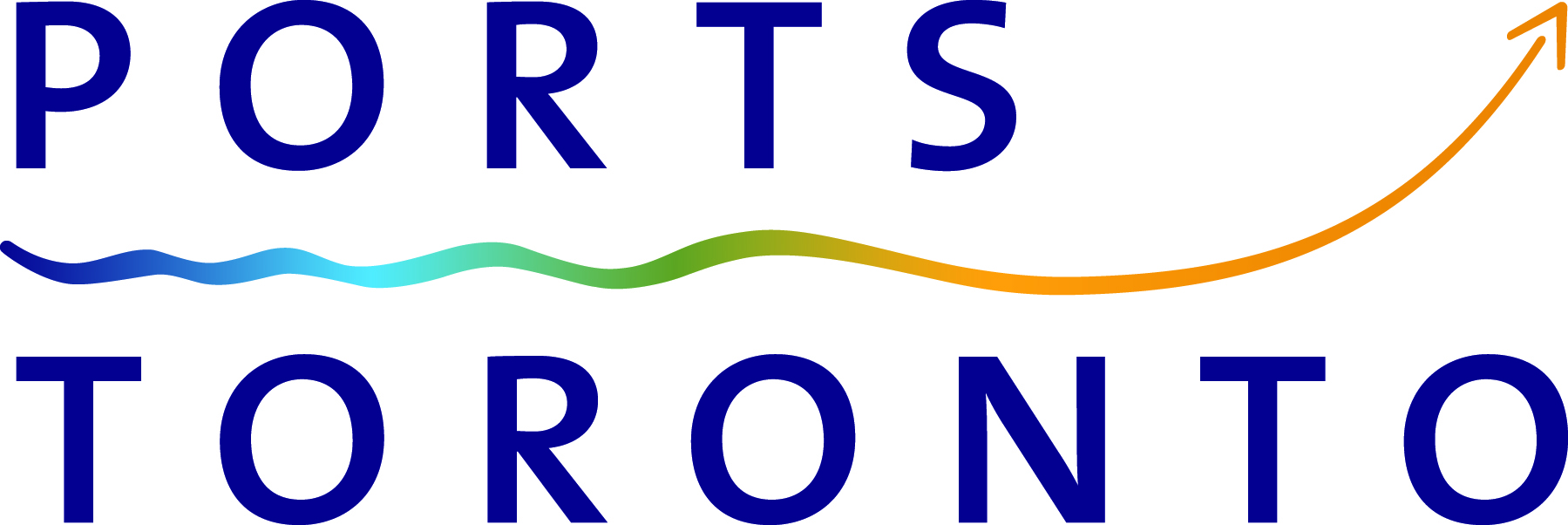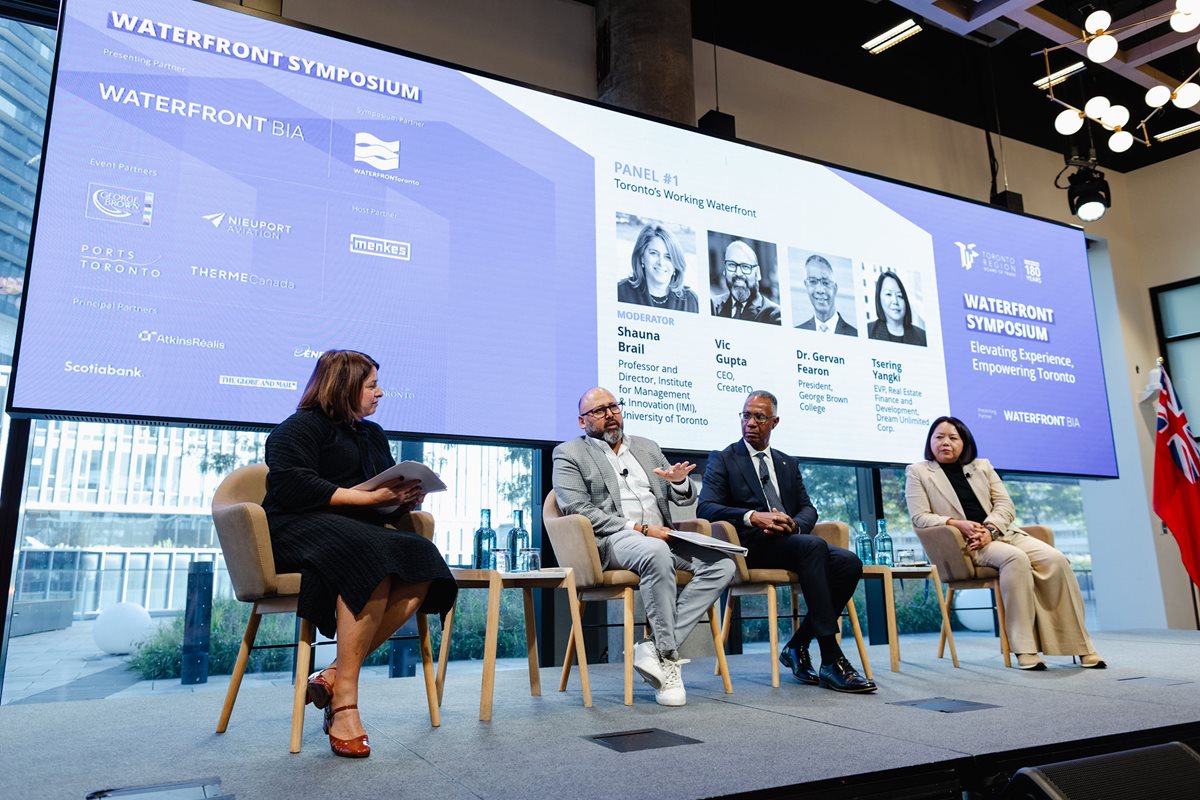
“The waterfront cannot be just one thing. It has to be all things at once: a lived-in community with housing and culture, a working harbour that supports jobs and industry, public spaces for people, and it needs to include transit that connects it all together.”
Those words from our President and CEO, Giles Gherson, framed a day of candid discussion at the Board's Waterfront Symposium, where leaders from across government, industry, and community agreed: Toronto’s waterfront cannot be defined by a single purpose. It must be all of them, working together. As Vic Gupta, Chief Executive Officer of CreateTO, underscored: “The waterfront already supports about 60,000 jobs today. With redevelopment, there’s an opportunity to add tens of thousands more. This isn’t just a residential project or a cultural project, it’s also an employment district. And that means making space for businesses, for industry, and for new sectors to grow.”
Christopher Glaisek, Chief Planning and Design Officer at Waterfront Toronto, put the challenge in a global context. “Great destinations are what make great waterfronts. Toronto isn’t in the world’s top ten yet and the reason is simple. The best waterfront cities have clusters of marquee attractions and family-friendly destinations that draw people year-round. We don’t have enough of those, but the ingredients are here.”
Speaker after speaker reinforced the point: the waterfront cannot be just one thing. It must be all of these at once and it has to be stitched together by a robust transit system, on land and on water, that finally uses the harbour to relieve congestion as much as it connects the city east to west.
With FIFA 2026 games being played on our waterfront in just a few months, the world will be watching, just one reason why Toronto must get our waterfront right.
Housing is infrastructure
The shortage of housing near jobs and schools is already costing Toronto nearly $8 billion a year in lost productivity. Without substantial new housing and complete communities, the waterfront will not succeed.
Transit unlocks investment
Employers and institutions need certainty. The Waterfront East LRT, stronger north–south links, and on-water transit are prerequisites for growth. Transit isn’t a nice-to-have, it’s the backbone of the business case.
A working port that powers the city
The port already handles more than two million tonnes of cargo a year, removing 51,000 trucks from city streets and supporting 2,000 jobs. Cruise traffic is climbing too, with 45 ships in 2024 leading PortsToronto to study the feasibility of a modern downtown cruise terminal to anchor that growth.
Year-Round, Destination-Grade Experiences
Toronto’s waterfront cannot rely on being a summer postcard. A resilient visitor economy depends on 365-day activation — anchor attractions, clustered experiences, and programming that keep people coming back in winter as much as summer. The ingredients are here, but we are still short on marquee, family-friendly, all-season destinations. Ontario Place’s renewal, cultural venues, sport, and science can form that cluster — if they are connected and easy to reach.
Learn from Global Models, Apply in Toronto
Great waterfront cities didn’t get there by accident — they moved multiple levers at once. Copenhagen showed what’s possible with clean water, continuous cycling and walking links, daily water-quality signals, and cultural institutions stitched into the shoreline. Sydney used its waterfront to anchor iconic cultural and recreational spaces, from the Opera House to Bondi, while Chicago turned its lakefront into a continuous public edge with connections across neighbourhoods.
$13.2 billion + 100,000 jobs
The projected impact of fast-tracking Waterfront Toronto’s revitalization plan, backed by a $975 million tri-government commitment.
Top ten vs. Toronto
The world’s leading waterfronts typically have 25–30 marquee destinations (often clustered) that draw sustained crowds; Toronto has about 9 today, and they’re spread out. Closing that gap is the difference between remaining outside the global top tier and joining it.
240km vs. 100km vs. 30km
A ship moves a tonne of cargo 240km per litre of fuel; trains move it 100km; trucks just 30. Every shift to marine shipping is a congestion, economic and climate win.
May 2026 tip-off
Toronto Tempo, the WNBA’s newest team, will debut at Coca-Cola Coliseum on the waterfront adding another marquee sports franchise to our shoreline.
6 million visitors, 5,000 jobs
Ontario Place’s redevelopment is expected to draw millions annually and support thousands of jobs, anchored by a new Science Centre, Indigenous cultural pavilion, year-round amphitheater, and Ontario Line access.
“Waterfronts are like the rock stars of social infrastructure. They’re magnetic. People are drawn to the water’s edge across cultures and generations. They supercharge equity and joy when designed for access and inclusion. And at their best, waterfronts combine all the elements of great social infrastructure: belonging, gathering, connection, culture, and play.”
— Matthew Lister, Partner & Managing Director, Gehl Architects
"The waterfront has yet to live up to its full potential. It’s been neglected, it’s been underused, and it’s been disconnected from the rest of our very vibrant city. But now, thanks to our collective efforts, we’re changing that and it’s changing very quickly. This is a generational opportunity to transform what should have been done a long time ago, and to create a destination that truly reflects the best of who we are."
— The Hon. Stan Cho, Ontario Minister of Tourism, Culture and Gaming
"The Waterfront East LRT is a major need. Without clear timelines and certainty, employers will hesitate to invest. And we also have to look north–south. It’s not just about getting from east to west — it’s about how people connect from the city down to the shoreline. If those links aren’t strong, the waterfront won’t work as a place to learn, work, and invest. Transit is what turns ambition into action."
— Dr. Gervan Fearon, President, George Brown College
"Public space is not just about design, it’s about programming. The waterfront will only succeed if it invites people back again and again, in every season, with reasons to stay and connect. That’s what makes a waterfront feel alive."
— Ilana Altman, Co-Executive Director, The Bentway
Thank you to our event partners for helping to make this event a success.
